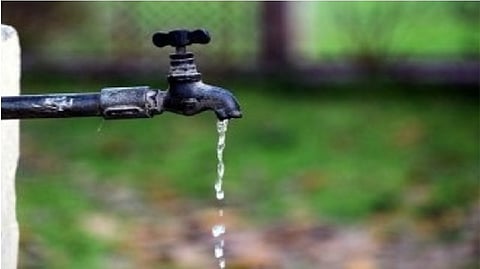

CHENNAI: The numbers released by the Regional Meteorological Centre, Chennai, after the northeast monsoon last year presented quite a rosy picture for the city: it received 1,360.4 mm, which was the highest seasonal average rainfall in the State. But does it help?
Probably not much. A recent study by the Department of Geology, Anna University, revealed nearly 38 per cent of the river basin in Chennai has poor groundwater potential. That is, even though the rainfall in any given season is beneficial, it may not be useful during the summer months because of the inability to reach the groundwater table. Instead, this water is wasted by letting it run through the drains into the sea.
L Elango, professor, Department of Geology, Anna University, and one of the authors of the study, pointed out how most parts of Chennai are not geologically conducive to take in water. This is the main reason why the groundwater table is poor. What has raised concerns among experts is how this has been exacerbated by rapid urbanisation that has changed land-use pattern and also increased exploitation of groundwater.
For instance, there is water stagnation on Marina beach, which is a sign that freshwater is percolating through the sands to recharge the water table. “But, despite the excellent sand level in areas like Pallavakkam, Tiruvanmiyur and Besant Nagar, the recharge is limited due to the increase in urbanisation,” added professor Elango.
Noting that the rapid pace in urbanisation is the primary reason for the water table sinking each passing year, experts said this could be arrested by making use of rainwater harvesting sumps and artificial groundwater recharge facilities. If done well, the city could save additional water with the excess rainfall expected this year, they said.
There was a good, copious rainfall during the southwest monsoon between May and June this year. If the northeast monsoon brings in average rainfall on top of this, there are chances that the water table would rise by about 5 to 10 per cent in the coming year, experts said.
“We need to carefully plan recharge structures and maintain them periodically. Due to climate change, intense rainfall is expected in the coming days,” the professor said. When it comes to groundwater table recharge, overall rainfall would not reveal the full picture. That is, high intensity showers would not help replenish the table as much as the low intensity but long duration rains.
Last year and the one before that, though we received good rainfall for five days, the duration was very less. If it rains for longer duration, the groundwater level will increase,” explained hydrologist Dr T Sivasubramanian.
In 2015, for instance, the city received extremely high rain in three days. The rainfall that Chennai received in those days, which should have measured just a few millimetres, was a massive 45 cm. As a result, most of this water drained into the sea through drains and waterways, as the speed of the current gave it little chance to settle and percolate. In contrast, if this rain was spread across several days, the ground would have absorbed it and replenished the water table.
Noting how rainfall patterns have changed over the past few years, many experts suggested conserving rainwater by digging new lakes and desilting existing ones, which would also help improve the water table.
“In general, Chennai city’s groundwater potential is average. Three years ago, the water level was poor. However, it improved during the pandemic, as the demand for water decreased from industries and the IT sector which remained closed for a long time during the lockdown. After the restrictions were lifted, the demand shot up again and the water level has gone down again,” said a senior official with the State Ground and Surface Water Resources Data Centre, Water Resources Department.
Besides the government agencies, the public can also take steps like installing sumps in residential areas, which would help recharge the water table during the monsoon months, he said. In particular, individual houses and gated communities should set up recharge structures like wells, the official said, adding that if this is done, the groundwater table would be replenished and would help the city during the summer months.
Visit news.dtnext.in to explore our interactive epaper!
Download the DT Next app for more exciting features!
Click here for iOS
Click here for Android